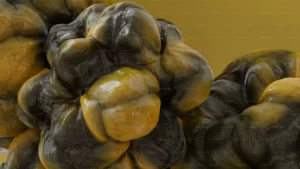Table of Contents
Introduction
With the rise of antibiotic-resistant strains of bacteria, the treatment of open and infected wounds has become increasingly challenging. However, there is a substance that has been used throughout history to effectively treat infections, and it is clinically proven to eradicate bacteria. This substance is manuka honey.
The Rise of Antibiotic-Resistant Bacteria
As antibiotic-resistant strains of bacteria continue to proliferate, the use of medical-grade honey, specifically manuka honey, is gaining attention in the field of wound healing for animals. While both table honey and medical-grade honey have antibacterial properties, it is important to note that highly processed table honey is not suitable for wound treatment. It is akin to high fructose corn syrup, which can increase infection. In contrast, medical-grade honey, such as manuka honey, exhibits better consistency in composition, quality, sterility, and bactericidal activity.
The Wound Healing Properties of Honey
Both table honey and medical-grade honey have been found to be effective in managing wounds. Table honey contains non-pathogenic microbes that can eliminate micro-organisms, decrease the size of wounds, and stimulate re-epithelialization. In a study of burn wounds in humans, daily dressings with table honey resulted in the elimination of bacteria within 7 days and complete healing within an average of 18 days. In comparison, patients who received silver sulfadiazine dressings had positive cultures at 7 days, and the average time to heal was 32.7 days.
However, it is important to note that regular store-bought honey may not be authentic honey at all. Up to 75% of honey sold in the U.S. is potentially adulterated or contaminated with antibiotic residues and should never be used to treat topical wounds. Medical-grade honey, on the other hand, undergoes sterilization via gamma irradiation to maintain its antimicrobial properties. Two common types of medical honey are manuka honey and greenhouse-produced hydrophilic honey gel.
Manuka Honey: An Extraordinary Healer
Manuka honey, derived from the Leptospermum tree native to New Zealand, has been found to have extraordinary healing properties. Clinical trials have shown that manuka honey can effectively eradicate more than 250 clinical strains of bacteria, including antibiotic-resistant varieties. It contains a unique compound called the Unique Manuka Factor (UMF), which gives it its exceptional antibacterial activity.
The level of UMF varies in manuka honey, and each batch is ranked and priced according to its UMF concentration. The higher the concentration of UMF, the darker, thicker, and more expensive the honey.
Using Manuka Honey for Wound Healing
I have extensively used manuka honey with my animal patients to manage resistant skin infections, burns, and large wounds that cannot be closed surgically. For example, I treated a homeless cat with an extensive soft tissue de-gloving wound to the left rear paw. The wound had developed gangrene, and the only treatment this cat received was daily application of manuka honey and a light bandage. Remarkably, the cat healed quickly without the need for antibiotics.
The Healing Power of Lactic Acid Bacteria in Fresh Raw Honey
Fresh raw honey, unlike the manufactured honey sold in grocery stores, has been used throughout history to treat infections. Researchers at Lund University in Sweden discovered 13 strains of lactic acid bacteria in fresh honey that produce a multitude of active antimicrobial compounds. These bacteria were tested in the laboratory on severe human wound infections such as MRSA, Pseudomonas aeruginosa, and vancomycin-resistant Enterococcus (VRE). The bacteria effectively neutralized all of these infectious organisms.
The researchers believe that the unique properties of fresh honey are due to the broad spectrum of active antimicrobial substances produced by the lactic acid bacteria found in a bee’s honey stomach. Unfortunately, store-bought honey does not contain these living bacteria, and many of its unique healing properties have been lost.
Conclusion
Manuka honey has emerged as a powerful tool in the treatment of open and infected wounds. Its unique antibacterial properties, derived from the Unique Manuka Factor (UMF), make it highly effective against antibiotic-resistant strains of bacteria. Medical-grade honey, such as manuka honey, provides better consistency and sterility compared to regular table honey.
When using manuka honey for wound healing, it is important to choose a product with a high UMF concentration. This will ensure that the honey has maximum antimicrobial activity. Manuka honey has been proven to be a safe and effective alternative to antibiotics in the treatment of various wounds, burns, and skin infections.



